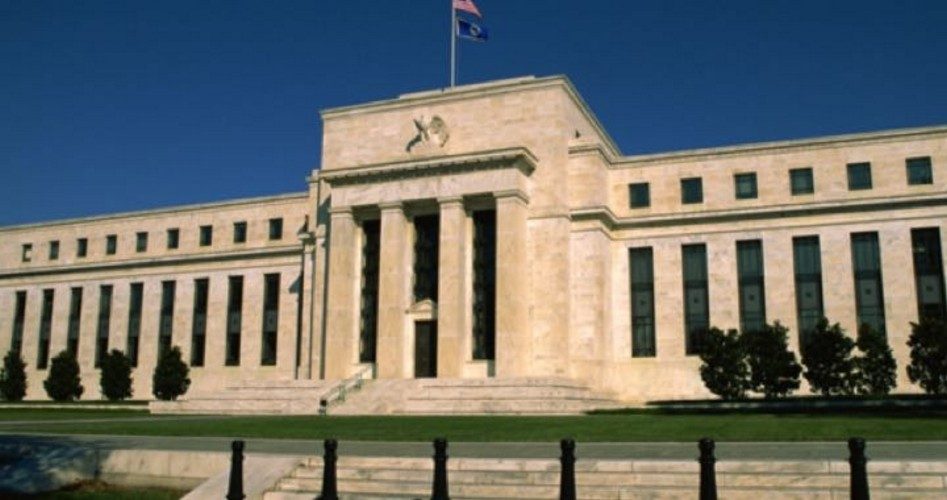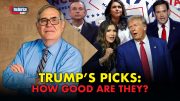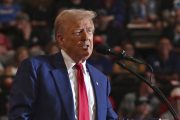
President Donald Trump’s early Monday morning tweet continued his criticism of the Federal Reserve, arguing that the central bank’s interest-rate increases threaten the U.S. economy. “It is incredible that with a very strong dollar and virtually no inflation, the outside world blowing up around us, Paris is burning and China way down, the Fed is even considering yet another interest rate hike. Take the Victory!”
Trump has been a persistent critic of the Federal Reserve, and it is certainly a fact that its policies can have a huge impact on the U.S. economy. But whereas Trump, like most presidents, is critical of the Fed because it is raising interest rates — thus slowing down the economy — former Texas Congressman Ron Paul has a different take.
Paul served several terms as a Republican in a Houston, Texas-area congressional district, but also ran for president on the Libertarian Party ticket in 1988, as well as making a bid for the Republican nomination in 2008 and 2012. Now retired from public office, Paul continues to speak out on economic issues, as he did late last week on CNBC’s Futures Now program.
Paul warns that the recent corrections in the stock market may be pointing toward a much more serious market collapse — one that may come sooner rather than later. “Once this volatility shows that we’re not going to resume the bull market, then people are going to rush for the exits. It could be worse than 1929,” he predicted.
The infamous stock market crash of October 1929 marked the onset of the Great Depression, with stocks falling off nearly 90 percent. While investment advisors tell their clients that the stock market “always comes back,” the brutal truth is that it took several years for the markets to reach pre-crash 1929 levels.
Paul has always avoided personal attacks on other political figures, concentrating instead on policies. He differs sharply with Trump on tariffs, and cautioned that the ongoing trade conflict between the United States and China is a risk factor that might touch off a stock market plunge. “I’m not optimistic that all of the sudden, you’re going to eliminate the tariff problem. I think that’s here to stay. Tariffs are taxes.”
But the biggest problem is the “quantitative easing” policy the Federal Reserve adopted in the aftermath of the 2008 financial meltdown, which Paul contends created the “biggest bubble in the history of mankind. It’s also important to understand the original cause of the problem, and that is the Federal Reserve running up the debt and letting politicians spend money.” The Federal Reserve pumped about $4.5 trillion into the economy after the 2008 financial crisis.
While a guest during the summer on CNBC’s Futures Now program, Paul said, “I see trouble ahead, and it originates with too much debt, too much spending. The Congress spending and the Federal Reserve manipulation of monetary policy and interest rates — debt is too big, the current account is in bad shape, foreign debt is bad and it’s not going to change.”
Paul did not leave Trump out of his criticisms. “We have a president who likes to spend. He is not concerned about the deficit.”
Paul is not optimistic that Congress, the president, and the Fed will heed his warnings. “The government will keep spending, and the Fed will keep inflating, and that distorts things,” Paul explained during his July appearance on Futures Now. “When you get into a situation like this, the debt has to be eliminated. You have to liquidate the debt and the malinvestment.”
What Paul is saying is that inflation — the increase in the money supply through Federal Reserve “easy money” policies — sends out false signals to investors, thinking there is more demand than actually exists. Investments are made that will ultimately fail, dragging down the rest of the economy. In the 1920s, the money supply increased a staggering 62 percent. While there was much legitimate economic growth in the decade, the inflationary policy of the Federal Reserve led to much malinvestment, including in the stock market.
Many mistakenly believe that because there was very little increase in the price level during the 1920s, that there was little inflation. But what should have actually happened in the period of increased production was a time of falling prices. But because of the prevailing opinion that high prices and high wages equal prosperity, however, the Federal Reserve was applauded as it kept lowering interest rates to keep prices from falling. Thus, the great boom of the 1920s ended in the great bust of 1929. A better policy would be to allow the free market — rather than a monopoly central bank such as the Federal Reserve — set interest rates, thus preventing the extreme boom and bust cycles we have seen over the course of American history.
But Paul argued last week that any similar economic reversal now does not have to lead to a repetition of the Great Depression. “If you allow the liquidation, it doesn’t last long,” Paul said.
The policies of first the Herbert Hoover administration, followed by similar policies of the Franklin Roosevelt administration, turned the 1929 collapse into the longest-running economic depression in U.S. history. But as Paul said, history also indicates it did not have to be. Less than a decade earlier, confronted with a depression almost as severe as the one in 1929, President Warren Harding chose to basically do nothing and not turn to government intervention. Instead, Harding allowed the liquidation of bad investments, as Paul argues for. As a result, the depression was so short that some have called it “the forgotten depression.”
But we should remember it, so we will not have a repeat of the Great Depression. Hopefully, President Trump will heed the wise advice of Ron Paul. The best long-term solution is to abolish the Fed, and let the free market set interest rates.
Photo of Federal Reserve headquarters: Clipart.com



